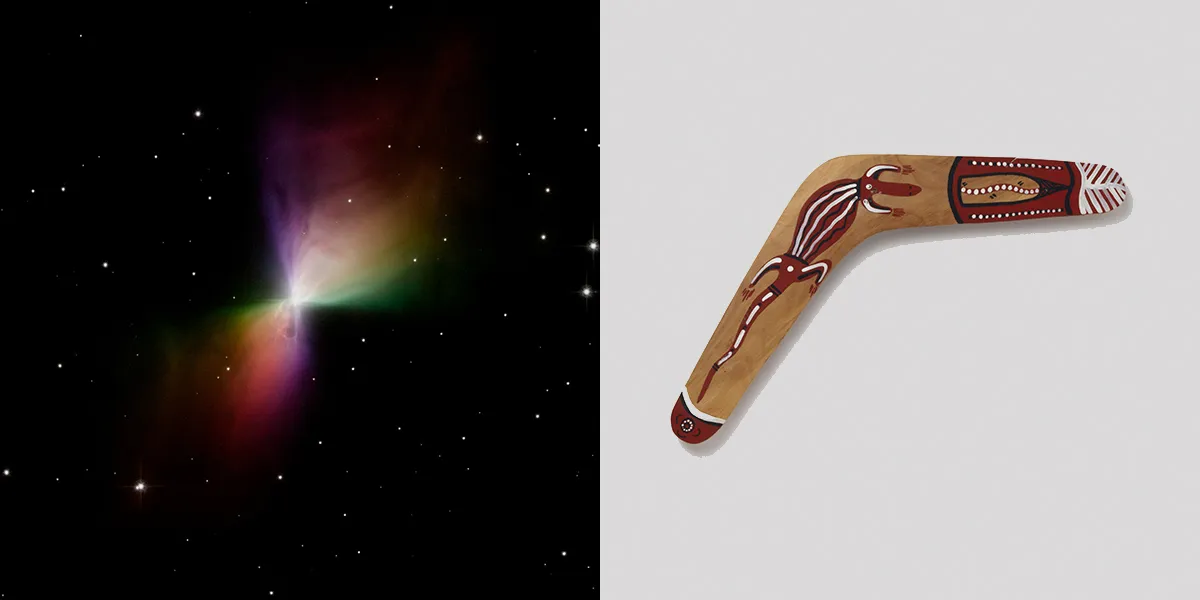The coldest place in the Universe is the Boomerang Nebula, a glowing cosmic cloud located 5,000 lightyears away in the constellation Centaurus.
Considering the Cosmic Microwave Background – the background glow left over from the Big Bang – is about -270°C and is generally regarded as the average temperature of space, this gives you some idea of just how cold the Boomerang Nebula is, relative to the rest of the cosmos.
The Boomerang Nebula is effectively colder than the rest of space. There is nothing colder than it known to humanity.
It seems it has rightly earned its title as the coldest place in the Universe.

The Boomerang Nebula’s title as the coldest place in the Universe is a result of a 1995 study by astronomers Raghvendra Sahai and Lars-Åke Nyman.
Using the 15-metre Swedish ESO Submillimetre Telescope in Chile, Sahai and Nyman observed the Boomerang Nebula and discovered its temperature to be -272°C, making it just 1°C warmer than absolute zero.
Considering the coldest place on Earth is –98°C (–144°F), that gives you an idea just how cold the Boomerang Nebula is.
And the temperature of the Moon can vary from 250° Fahrenheit (120° Celsius) at its equator during daytime to -208 degrees F (-130° C) at night.

Why it's called the Boomerang Nebula
The Boomerang Nebula was first observed in 1980 by astronomers Keith Taylor and Mike Scarrott, who used the Anglo Australian Telescope at Siding Spring Observatory to discover its double-lobed shape.
This symmetrical formation is a result of the star shedding its material out into space in two opposite directions, which is occurring because the Boomerang Nebula is a planetary nebula (more on this later).
As it appeared to Taylor and Scarrott when viewed through the telescope – and perhaps because they were in Australia – the nebula's shape reminded the two astronomers of the famous Australian throwing tool, and the Boomerang Nebula got its enduring nickname.
More recent observations by the Hubble Space Telescope, however, reveal its double-lobed shape, and that it in fact doesn't look much like a boomerang at all.

Fast-forward to the mid 1990s, and astronomer Raghvender Sahai was considering the notion that somewhere in the Universe there must be a place that's colder than the background glow left over from the Big Bang.
Dr Sahai and his colleague Dr Nyman studied the Boomerang Nebula and concluded that it was absorbing background radiation.
This led them to infer that the Boomerang Nebula is the coldest place we know of in the Universe. It's the only region known to be colder than the background glow of the Big Bang.
Why the Boomerang Nebula is so cold

The Boomerang Nebula is an object known as a planetary nebula, which is one of the final stages of a Sun-like star’s life.
As the star runs out of fuel, instability at its core causes the star to shed its outer layers.
A stream of charged particles known as a stellar wind pushes this material outwards, often creating a round, puffed-out object.
This spherical appearance appearance is what gives planetary nebulae their name: they don’t actually have anything to do with planets.
The Boomerang Nebula may not have a rounded appearance typical of a planetary nebula, but it is expelling vast amounts of cosmic material at breakneck speeds, and has been doing so for about 1,500 years.
And this is why the Boomerang Nebula is the coldest place in the Universe: it is expelling mass, which is projected outwards and rapidly expanding, causing it to cool down to the extent that it is actually colder than space itself.

